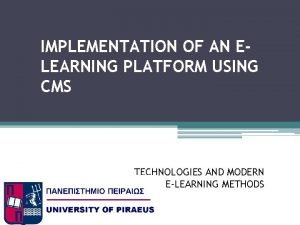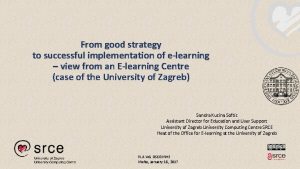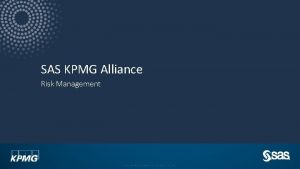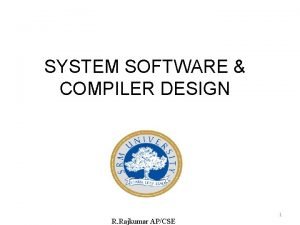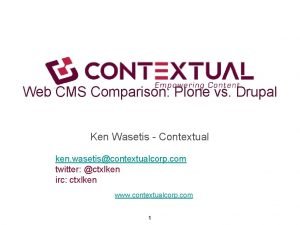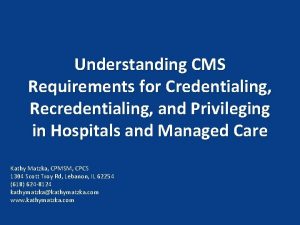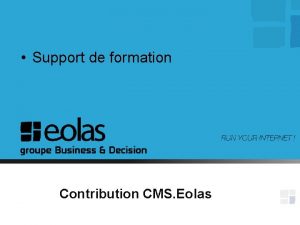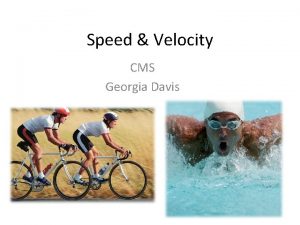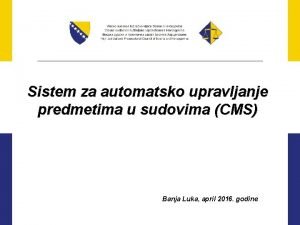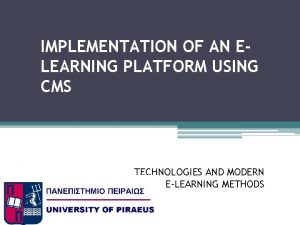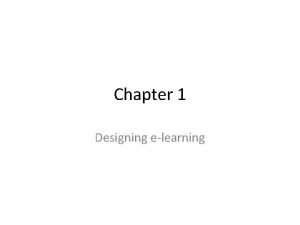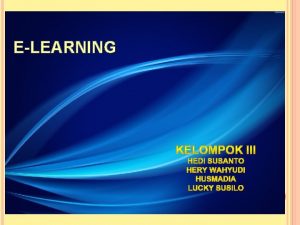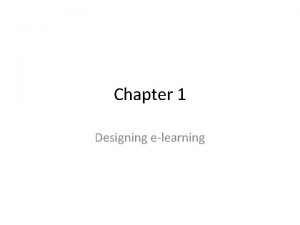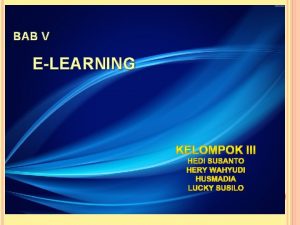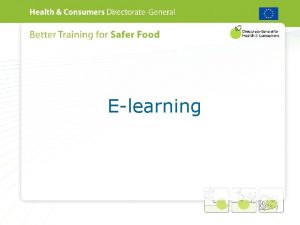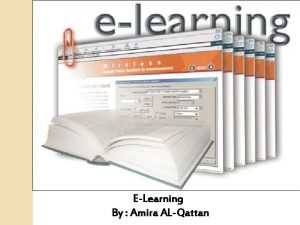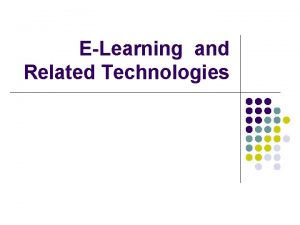IMPLEMENTATION OF AN ELEARNING PLATFORM USING CMS TECHNOLOGIES











- Slides: 11

IMPLEMENTATION OF AN ELEARNING PLATFORM USING CMS TECHNOLOGIES AND MODERN E-LEARNING METHODS

Introduction v In this paper we present an integrated and responsive elearning platform, in order to meet the need for continuing education of sailors. v The platform, which is named Online Maritime Training (OMT), is based on CMS technologies and modern e-learning methods and features. v OMT covers both synchronous an asynchronous ways of education, using several Web 2. 0 tools and Wordpress features, in purpose of improving the learner’s experience and delivering high level educational content.

E-learning in action v E-learning has gained strong foothold in the delivery and management of courses. v As we are getting more familiarized with e-learning, we tend to understand the impact of many factors on elearning effectiveness. v In many professional fields, the implementation of –elearning is becoming more and more useful and necessary. More specifically, sailors need to continuously update their skills during their professional career.

OMT Objective The main objective of this project is to create and design an integrated e-learning platform for ashore and onboard users. OMT combines : v CMS technologies, Web 2. 0 tools v Μodern e-learning methods OMT supports synchronous and asynchronous ways of learning. In synchronous online learning, real-time interaction and communication between learner and instructor is provided. Asynchronous online learning allows learners to access the online materials anytime, as long as they have Internet access.

E-LEARNING TECHNOLOGIES CMS Technologies Applied We primarily utilized Wordpress, as it has already been proven it can be used as a higher educational tool for learners. Wordpress v User friendly environment v Based on PHP and My. SQL v Additional features include plugin architecture and template system

E-LEARNING TECHNOLOGIES Platform Key Features v User Pro Login - Each student creates his own account in which students and professors can track students activity, etc. . Moreover, we added an extra functionality which allows users to register to the platform by using their social media accounts. v Quiz - Quizzes are part of the student examination process, in which they include questions created specifically for the purpose of examining the learning material of the corresponding course. v Questions - They are included in quizzes and they can be answered in different ways. v Test - It is the unit that includes quizzes created by the professors for a specific course. v Forum - The area where the students and professors can exchange information, opinions and discuss about a topic regarding the courses. v Blog - Blog as a feature in our LMS is a unit tracking the recent activity of a student. v Live Video - Allows students and instructors for synchronous communication and conferences in real time. v Course Curriculum - Every course created needs to have a table of contents, in order students to be able to see if it matches their criteria. v Platform Security - For the security of the platform different techniques are used which prevents attacks such as SQL injections, dos attacks and cross site scripting.

Analysis Procedures (Teaching Use Cases/Scenarios) OMT as an LMS provides the following features: • Integrated login system (easier tracking of students) • Create and manage the courses • Create assessments • Manage course’s curriculum • Provide the ability for learners to exchange information and discuss (forum, blog, chat, emails) • Track learner’s needs and preferences • Track students’ scores, quizzes, grades, course completion

Implemented e-learning module v The implemented e-learning module is consisted by 3 different course categories, which are Standards for Training, Certificate & Watch keeping, Operational & Technical and Executive Management Soft Skills courses. v OMT provides online material for these courses (pdf, Power. Point presentations, quiz, forum, live-video, etc. ), in order to keep the courses always updated and accessible to the learners. In this way, it becomes feasible for seamen to constantly enhance and refresh their knowledge about the new essential safety rules and guidelines. v The integrated platform offers to maritime community benefits that exceed the typical classroom instructions. OMT grants costefficiency and geographical flexibility, as the courses can be taken in any location even ashore or onboard.

Courses Preparation Interactive instructional design and the interaction between learners can lead to learning satisfaction, which is crucial for our purpose. In the process of creating an online e-learning course our aim is to make the learner interact with the material or the instructor as much as possible. That's why our goal is to create a user-friendly environment for the learners, in order to achieve the aforementioned. The course’s preparation and the content presented in each course should be carefully selected and modified accordingly to the appropriate consultations of the professors. Course flexibility and quality are both taken under consideration before a course is created, since flexibility and quality play a major role on a perceived learner’s satisfaction. There are three types of interactions in learning activities: student with teacher, student with materials, student with students.

Courses Preparation We implemented evaluation forms, regarding the levels of evaluation of a common framework used for e-learning. The levels of evaluation are described briefly below: v. Tracking Attendance in Training v. Course Evaluation v. Satisfaction/Opinion v. Knowledge v. Skills v. Transfer v. Agency/Client Outcomes

CONCLUSION v This paper describes the implementation of an e-learning platform using CMS technologies and modern e-learning methods, in order to fulfill the needs of ashore and onboard seamen. It also points out the evolution and the importance of e-learning in the maritime community and in each student individually. v Furthermore, we explain the features Wordpress CMS offers to us and how these features affect the online learning experience of the learners significantly. These features improve the interaction between the students with students, the teachers with students and the students with the material of each course. v We designed OMT platform, as an LMS targeted to maritime community for online learning and teaching, in order to be a flexible and scalable web based platform. Also, the platform provides us, through the statistical features, the identification of the personalized user needs and overall performance based on the user profile.
